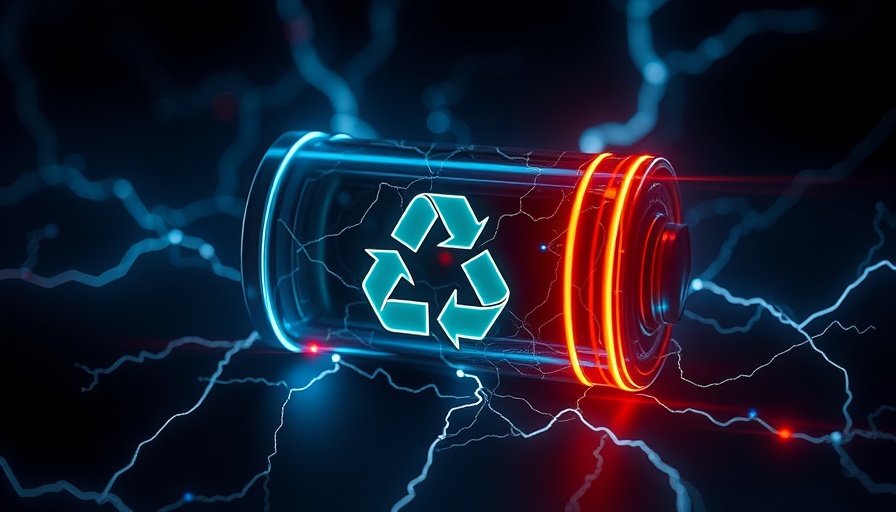
A New Era for Sustainability: The Forever Battery
In the quest for sustainability, the question often arises: where do we find solutions to today's pressing environmental issues? The recent video, The Blueprint for a Forever Battery, presents a transformational perspective on battery waste, revealing that the key to a greener future may lie not in the extraction of new resources, but in the recycling of what we already have. Within our abandoned devices and discarded electric vehicle batteries lies a wealth of materials ready to be reclaimed—rich, untapped resources that can help pave the way for a sustainable future.
In The Blueprint for a Forever Battery, the discussion dives into innovative recycling solutions that spark deeper analysis on the importance of urban mining and sustainability.
Hidden Treasures: Urban Mining
As highlighted in the video, conventional thought around dead batteries often paints them as looming environmental disasters. Yet, what if we viewed them instead as miniature mines filled with precious metals? Companies like Redwood Materials, founded by Tesla's co-founder, have embarked on a mission to recover valuable materials such as lithium, cobalt, and nickel from dead batteries. This innovative practice, known as urban mining, emphasizes the importance of recycling and the potential to transform waste into wealth. By implementing this approach, we not only diminish our reliance on harmful mining practices but also create a circular economy where resources are reused rather than discarded.
Benefits of the Recycling Revolution
The environmental impact of recycling instead of mining is monumental. Urban mining addresses ethical concerns surrounding mining practices while simultaneously reducing carbon emissions and the waste produced by traditional processes. Furthermore, companies venturing into this sector are not just improving ecological outcomes; they are also contributing to economic growth by creating jobs and promoting industries based on sustainable practices. This shift in how we view battery materials positions recycling as not only a necessity but also an opportunity.
Empowering Consumers: The Role of Battery Passports
The concept of battery passports, which would track the lifecycle of batteries from production to disposal, is another innovative solution discussed in the video. This idea empowers consumers to make informed choices regarding their purchases. Understanding a company's end-of-life plan for batteries provides transparency and encourages electric vehicle manufacturers to adopt more sustainable practices. By holding companies accountable, consumers play a critical role in fostering an eco-conscious market.
Future Insights: The Road Ahead
The future potential for sustainability through recycling isn’t limited to batteries. Just as the video prompts us to rethink what we consider waste, it encourages us to explore other everyday products that may house hidden resources. From outdated electronics to plastic containers, it opens the door for innovation in waste management and resource recovery. By embracing a holistic view of sustainability, we create a resilient economy capable of withstanding the pressures of resource scarcity.
Addressing Common Misconceptions
Many might view battery recycling as an impractical solution faced with extensive challenges. However, it's essential to highlight that advancements in technology are genuinely making these processes more feasible and cost-effective. The investment in research and development for recycling methods will only grow, making this pathway even more attractive for businesses seeking sustainable solutions.
Being Part of the Change
If the concept of the Forever battery resonates with you, consider taking action in your community. Advocate for recycling initiatives, support companies with sustainable practices, and participate in local programs designed to promote eco-friendly living. Every small action counts when we aim for a larger collective change.
Ultimately, the ideas presented in The Blueprint for a Forever Battery challenge the status quo, positioning us to embrace a future where discarded technology is no longer viewed as waste, but rather as a reservoir of valuable resources. Let’s unite in making sustainability efficient and effective. Take a moment to reflect on the electronic waste around you and consider how you can contribute to the revolution of urban mining.
 Add Row
Add Row  Add
Add 






Write A Comment